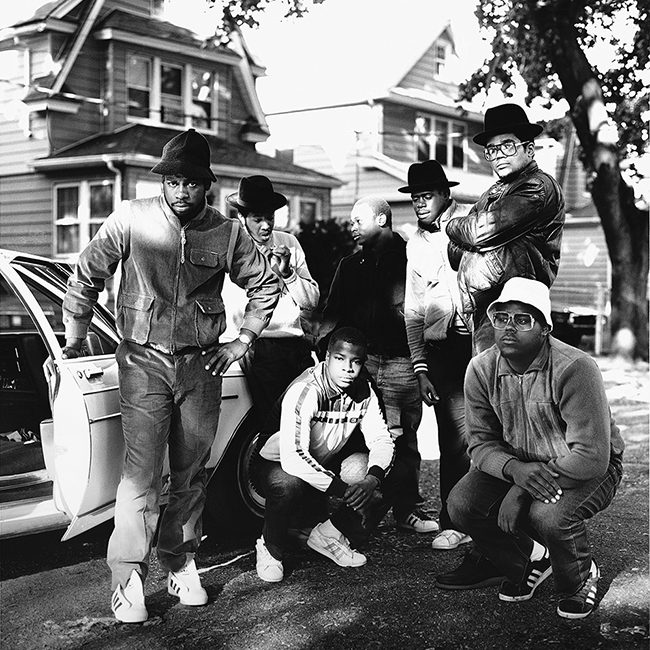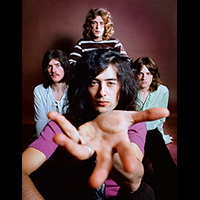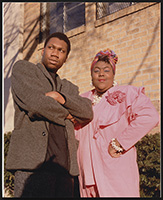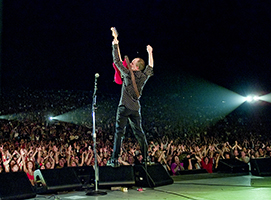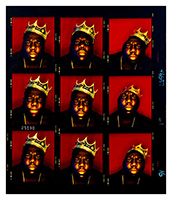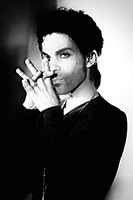Earlier this month, Prestel published 1-2-3-4 by Anton Corbijn, the legendary photographer and director. This oversized book, which includes 300 black-and-white photographs and a handful of color images, accompanies an exhibition of the same name now hanging at the Fotomuseum Den Haag, in The Hague, Netherlands. The show and book include both widely known and unseen music photographs from the beginning of Corbijn’s career up to today. Another show of Corbijn’s work, “Hollands Deep,” a general retrospective, is running concurrently at the Gemeentenmusem Den Haag. Corbijn’s “1-2-3-4” exhibition was recently extended through August 15, 2015, due to a record number of visitors.
Corbijn began his career shooting for the London-based weekly, New Musical Express (NME), in the late 1970s. Since then, he’s built quite a resume, photographing album covers for bands like Nick Cave, Metallica, The Rolling Stones and U2; producing set designs for touring bands like Depeche Mode; and directing feature films such as 2014’s A Most Wanted Man starring the late Philip Seymour Hoffman, and LIFE, a story about LIFE magazine photographer Dennis Stock and his friendship with James Dean, which was released earlier this year.
This year Corbijn celebrated his 60th birthday and almost 40 years in the photography industry. PDN asked him to tell us how he got started, what’s kept him going, and what advice he has for photographers who want to follow in his footsteps.
Photo District News: Though you have a diverse resume, you’re well-known for your music photography. Tell us about the book, 1-2-3-4.
Anton Corbijn: It is first and foremost a catalogue of the show at Fotomuseum Den Haag.
Putting the show together was an enormous task that took most of a year (whilst I was editing my new film LIFE) but the book editing was therefore very quickly done. We had to, in order to make the deadline for the opening.
PDN: In the book you write that you feel your photos capture a world that “no longer exists.” What do you mean by that?
AC: I meant that the taking of photographs of people in the public eye [that are] not meant to be sold to magazines all over the world, is almost non-existent now (look at my images of L.L. Cool J, Joe Cocker, Sting, Traffic, etc., they are unsellable). I meant the absence of mystery nowadays. I meant the loss of a more innocent world where music was the voice of a generation.
PDN: Photography’s changed a lot during your 40-year career. Did you ever make the switch to digital?
AC: I never switched to digital, still shooting analogue to this day. The only switch I made was for this particular show (“1-2-3-4”) to scan my negatives and use digital post-production. I think that is a great way to get the best of both worlds, but you have to be so careful not to become too perfect, you need to avoid images becoming “lifeless.”
The other show at the Gemeentemuseum, “Hollands Deep,” shows my development as a photographer, with conceptual series being part of this development. It shows a much wider group of subjects, varying from Robert De Niro to Stephen Hawking to Gerhard Richter to Kate Moss to Lars von Trier to Ai Weiwei to Elmore Leonard, etc., as well as musicians. The “1-2-3-4” show is a celebration of my work within the music world as I started to realize my position in that.
PDN: Let’s back up a bit. When did your photography career begin?
AC: The first time I used a camera (my dad’s) at a Solution concert in 1972. Only took about 9 frames though!
PDN: How did you start promoting your work?
AC: It was very much amateur hour. Nobody, barring one magazine under the header “here is something from one of our readers,” ever published my photographs the first two years. I would print the photos and send them off, but to no avail.
PDN: What would you recommend to young photographers today who want to shoot bands and actually make some money doing it?
AC: No idea. If I was young now I would not dive into the world of music. What excited me at the time was to find out more about that world that I saw as a mysterious place. Now with the Internet and gossip magazines there is no mystery left to dive into.
PDN: What do you think makes your work unique?
AC: I like to elevate the image over the importance of the person on the image. Obviously I fail at times, but the aim is always there. I realize this is an ambivalent stance but one worth taking.
You cannot distinguish between images I made for money and those I made autonomously. They are always my kind of photographs.
PDN: What are you working on now? What’s next?
AC: Although photography is my big love, I am starting to prepare for my fifth movie, so that is where the adventure is, and where the energy and time goes. —Amy Wolff
Related: Photography Blues: Portraits of Legendary Blues Musicians
Pitchfork’s Dynamic Cover Stories Get Readers To Linger Over Articles (PDN Subscribers only)
